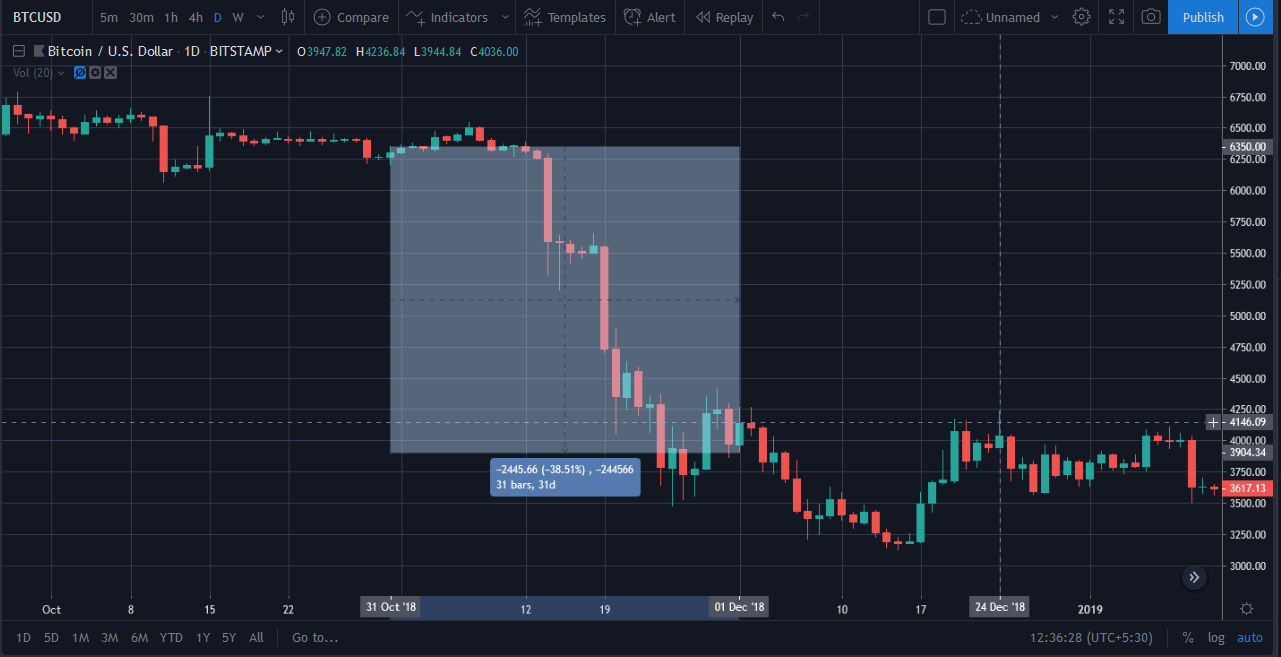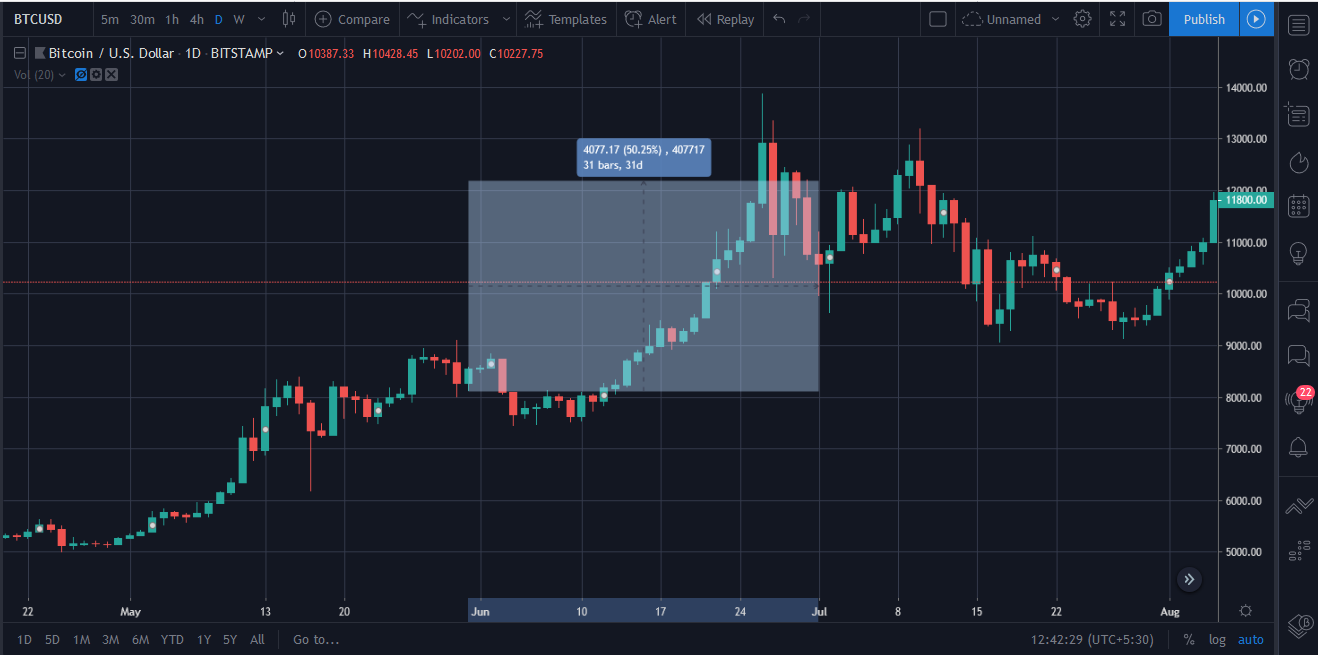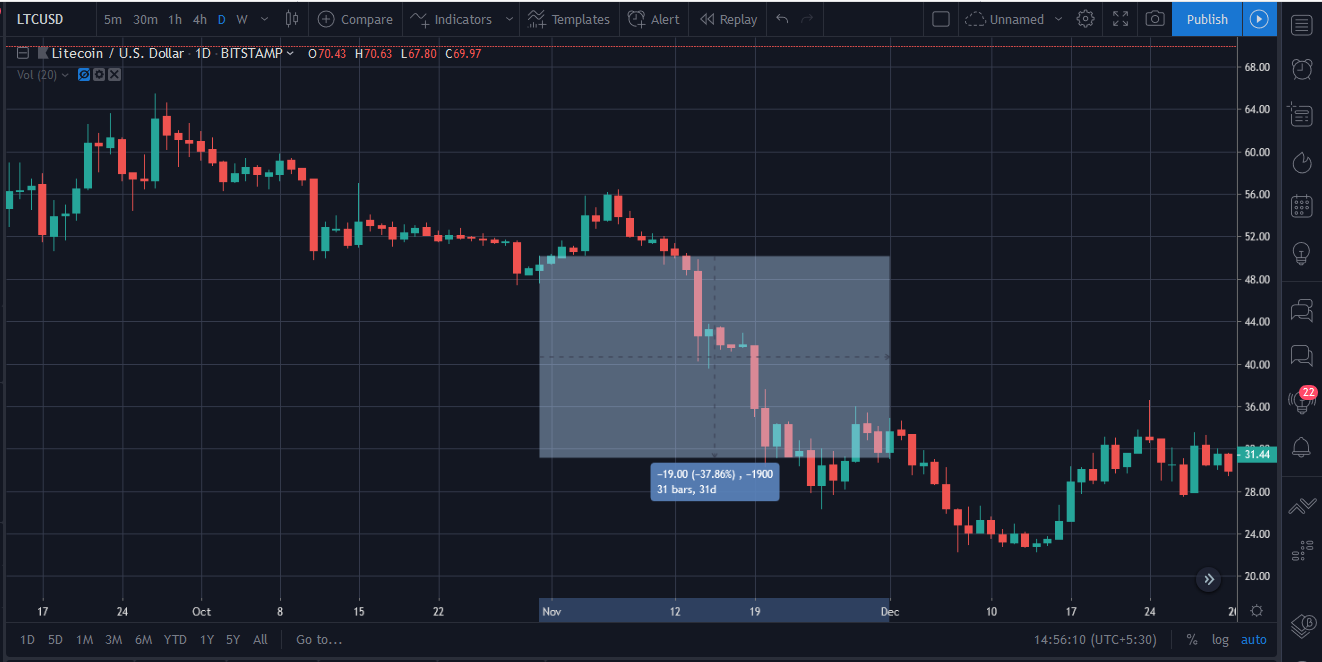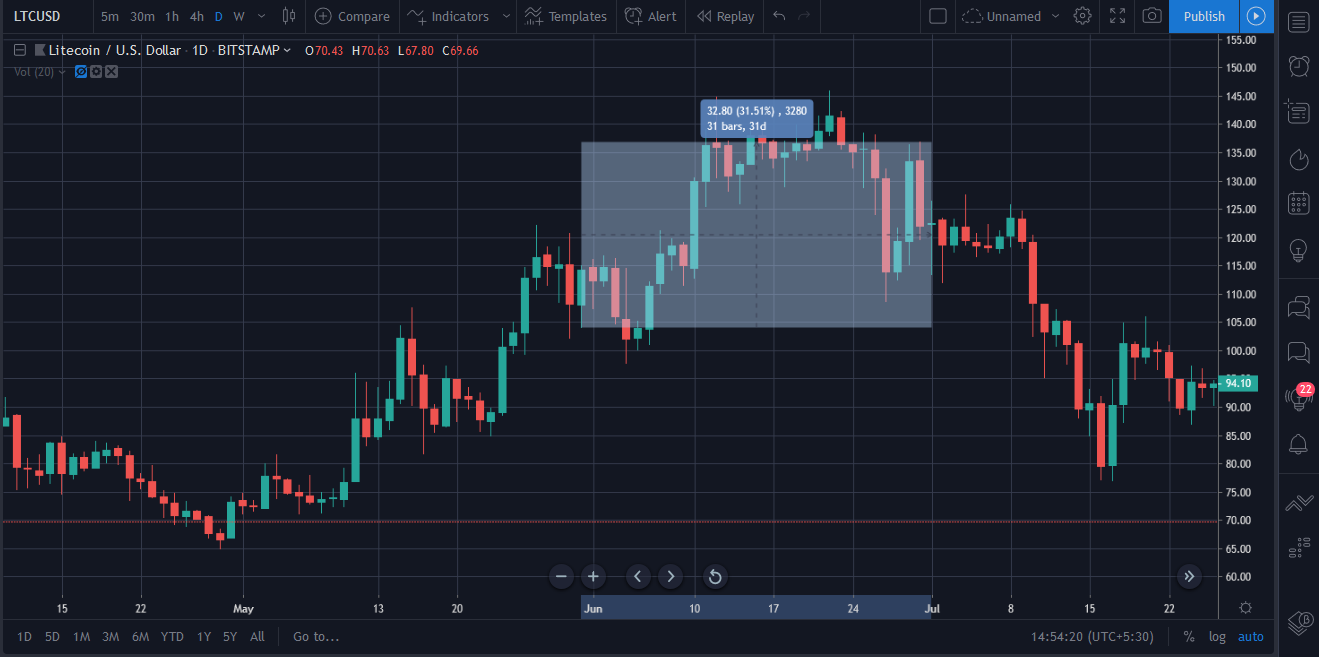Litecoin’s trade activity increased during bullish and bearish phase, whereas BTC was ‘hodled’ more

The virtual asset industry navigated a bearish winter in the later half of 2018 and broke into a bullish run in the second quarter of 2019. Massive price fluctuations were witnessed in both periods as major assets witnessed rapid decline and growth.
Bitcoin and Litecoin felt the impact of both trends and stark trading activity was observed.
Bitcoin Trade Activity

Source: Trading View
From 31 Oct 2018 to 1 Dec 2018, Bitcoin suffered a massive decline which saw its price drop from $6350 to $3904.09, resulting in a drop of 38.51 percent.
According to data from intotheblock.com, trader addresses [addresses holding assets for less than 1 month] declined from 2.07 million to 2.03 million. Additionally, the amount of BTC traded over the same period dropped massively. Before 31 Oct, 6.31 million BTC were noted to be actively used for trading over 30 days, but after the drop, only 2.88 million BTCs were reportedly active for trading purposes during Oct 31st-1st Dec.
In the same period, cruiser addresses [addresses holding assets between a period of 1 month and 1 year] also decreased from 8.81 million to 8.45 million but the amount of Bitcoin held by theses addresses increased. 8.81 million addresses held 6.59 million BTC before Oct 31st, whereas 8.45 million held over 9.86 million BTC (till 31st Nov), indicating an increased rate of hodling.

Source: Trading View
Analyzing the 2019 bullish period, from 31st May to 30th June, Bitcoin’s price surged from $8130 to $12190, exhibiting a growth of 50.25 percent.
Looking at the data one can surmise:
30 days before May 31st, 6.83 million cruiser addresses held 8.93 million BTC
From 31st May-30th June, 6.93m cruiser addresses held 9.43m BTC
Data indicated that BTC held during bullish phase also increased in the market.
Comparing that with trader addresses we observed,
30 days before May 31st, 2.90m trading addresses traded 3.53m BTC
From 31st May-30th June, 3.12m trader addresses traded 3.10m BTC
Hence, in a similar fashion to the bearish period, Bitcoin trading decreased during the bullish run as well.
Litecoin Trading Activity

Source: Trading View
Litecoin’s price had also plummeted during the bearish phase of 2018 where the devaluation stretched from $50.08 to $30.18 [37.86% drop]. Keeping in the mind the same metrics, the data exhibited during 31st October-31st November are listed below.
30 days before 31st October, 2.21m cruiser addresses held 31.07m LTC
From 31st October-1st December, 1.94m cruiser addresses held 28.m LTC
Data registered a declined of LTC held during the bearish phase.
In the case of Trader addresses,
Of 30 days before 31st October, 210.72k addresses traded 11.44m LTC
From 31st October-1st December, 185.21k addresses traded 16.3m LTC
Data suggested trading of LTC increased sharply during the bearish market.

Source: Trading View
The bull rush of 2019 was prevalent for Litecoin as well as the price registered a growth of 31.51% from 31st May-31st June. The data revealed,
30 days before May 31st, 994.5k cruiser addresses held 29.58m LTC
From 31st May-30th June, 1m cruiser addresses held 29.88m LTC
Data indicated that LTC held during bullish phase did not change significantly.
In terms of trader addresses,
30 days before May 31st, 273.15k addresses traded 13.83m LTC
From 31st May-30th June, 343.63k addresses traded 14.36m LTC
Hence, the amount of LTC active in trading increased in the bullish phase as well.
Conclusion
When the trading data and hodling data of both major coins were compared, it can be observed that Litecoin addresses definitely traded more. Bitcoin addresses were traded less in both trends but the people hodled Bitcoin more during the past 12 months.






